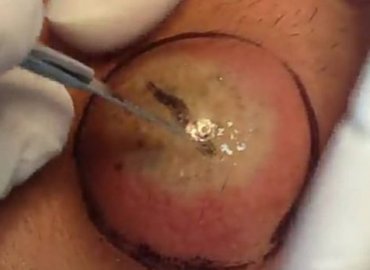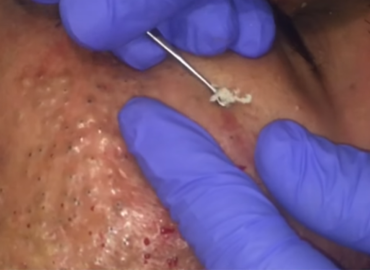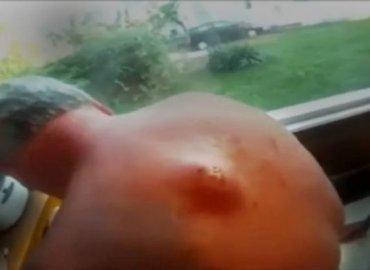An epidermoid cyst (Epidermal Inclusion cyst, Infundibular cyst), is a benign growth commonly found in the skin and typically appears on the face, neck or trunk, but can occur anywhere on the body. Another name used is “sebacous cyst” but this is actually an antiquated misnomer, and is not a term used by dermatologists. They are also the most common type of cutaneous cysts. Epidermoid cysts result from the reproduction of epidermal cells within a confined space of the dermis. The pasty contents are mostly composed of macerated keratin (wet skin cells), which creates this “cheesy” consistency, and there can be a pungent odor. An epidermoid cyst may have no symptoms and are typically harmless. Usually people seek removal because they don’t like the appearance of these bumps, or the cyst has ruptured or been inflamed or “infected” in the past. Rupture is associated with sudden redness, pain, swelling, and local heat, and can lead to abscess formation. Also, a history of inflammation, often increases scar tissue in the area, makes the cyst more firmly adherent to surrounding skin, and makes it more difficult to remove. Surgical excision is curative, but the complete cyst removal including the entire cyst sac and contents need to be removed to ensure that the cyst won’t reoccur.
Cysts are fluid-filled pockets that form on the skin. While not usually dangerous, they can be painful and annoying. Depending on the type of cyst, you can usually have a cyst medically removed with the assistance of a doctor.
Dealing with Facial Cysts
Decide if medical intervention is necessary. Facial cysts, medically referred to as sebaceous cysts, can be annoying and unsightly but they don’t necessarily require medical intervention. If the cyst is not painful, it might be best to leave it alone to avoid complications having it removed. However, you should see a doctor if any of the following develop:
-Facial cysts are usually small, round lumps just underneath the skin. They may be black, reddish or yellowish, and occasionally release foul-smelling discharge. Cysts are generally more painful than other skin conditions, such as pimples.
-If the cyst ruptures, this can lead to a potentially dangerous boil-like infection. Prompt treatment and removal is required.
-If the cyst suddenly becomes painful and swollen, it may be infected. See a doctor to get the cyst removed and get the proper antibiotics.
-In very rare cases, a cyst can lead to skin cancer. During your regular annual doctor’s exam, ask your doctor to look at the cyst and determine if it poses a risk for cancer.
As it turns out, Super Blackheads are really hard to find in anything other than pictures. Everyone wants to see them, so we put a $50 bounty for anyone who can produce footage of this medical syndrome.
If you have Giant Blackheads, send us a video of their removal and we hope to be able to pay you some cash for it, assuming it is a good quality clip and you have the rights to sell it.) So share those blackheads folks!
Cysts are common on the skin and can appear anywhere. They feel like large peas under the surface of the skin. Cysts can develop as a result of infection, clogging of sebaceous glands (oil glands), or around foreign bodies, such as earrings.







